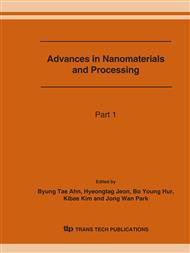p.1657
p.1661
p.1665
p.1669
p.1673
p.1677
p.1681
p.1685
p.1689
Mechanical Strength and Microstructural Characterization of SUS304 Brazed Joints with BNi-2 Filler Metal: Influence of Brazing Temperature and Time
Abstract:
The formation of intermetallic compounds in brazed joints between SUS304 and nickel-based filler metal is a major concern, since they considerably degrade the mechanical properties of joints. In this study, the SUS304, which is used widespread, as a general material was vacuum brazed with BNi-2 filler metal, and discussed to determine the influence of different brazing temperature and time on the strength of brazed joints. The results showed that, the mechanical properties of brazing layer could be stabilized through increasing the brazing temperature over 100° C more than melting temperature of filler metal, and increasing the brazing time over 120min. long, and diffusing enough the intermetallic compounds formed in the brazing layer to the base metal.
Info:
Periodical:
Pages:
1673-1676
Citation:
Online since:
June 2007
Authors:
Price:
Сopyright:
© 2007 Trans Tech Publications Ltd. All Rights Reserved
Share:
Citation:


